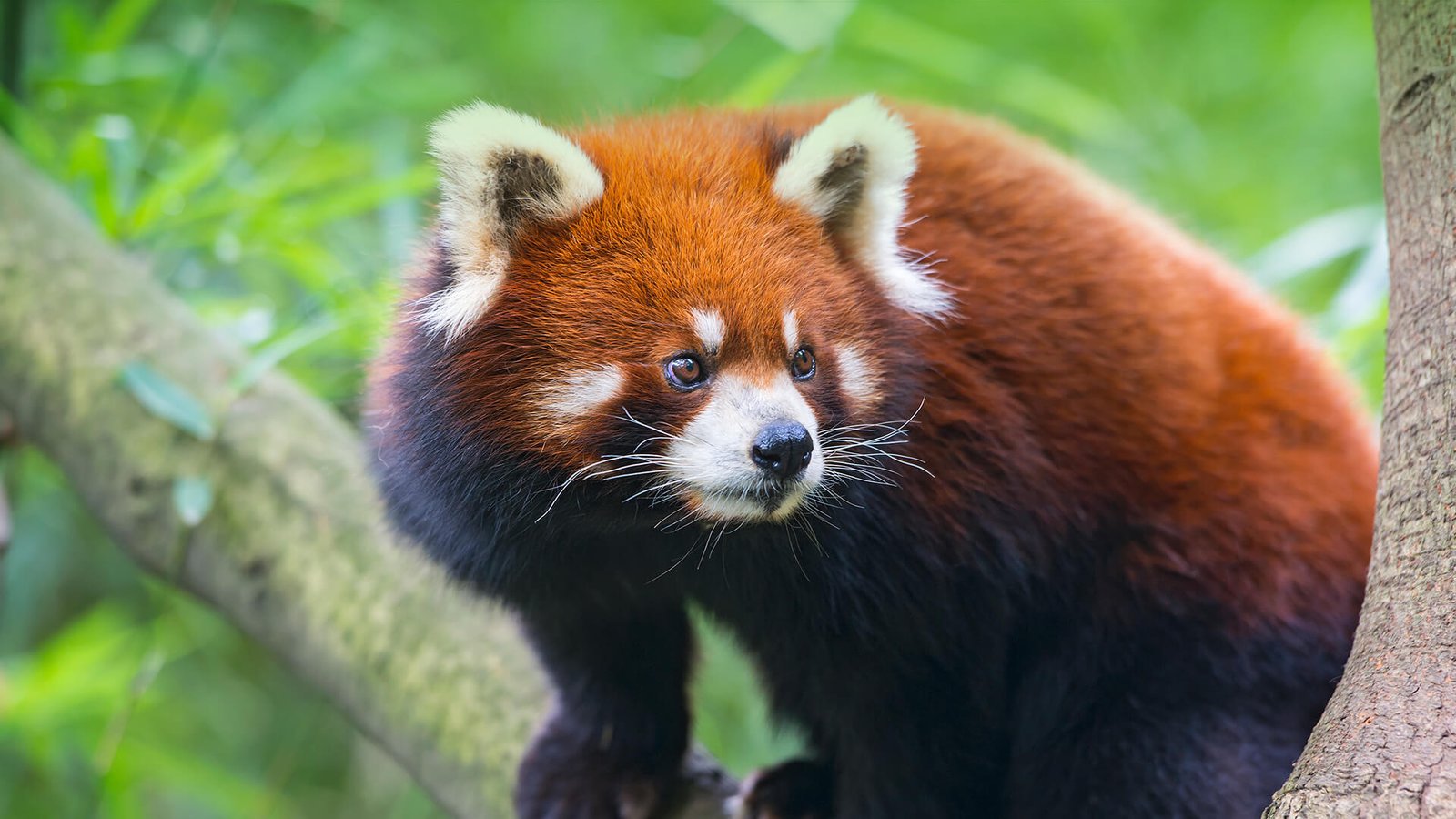When most people think of pandas, they picture the iconic black-and-white giant munching on bamboo in a Chinese reserve.
But there’s another panda quietly living its life high in the Eastern Himalayas — the red panda.
This elusive, raccoon-sized mammal is a bundle of charm, with fiery fur, a bushy tail, and expressive eyes. Despite their undeniable cuteness, red pandas are facing a silent struggle for survival, and it all begins with one crucial aspect of their lives: their habitat.
A Life Among the Clouds
Red pandas live in a very specific environment. Their natural habitat spans the temperate forests of the Himalayas, stretching across Nepal, Bhutan, India, Myanmar, and southern China. These forests are nestled at altitudes between 2,200 and 4,800 meters (7,200 to 15,700 feet), where the air is thin, the temperatures are cool, and the ecosystem is unique.
These forests are unlike any other. They’re thick with bamboo undergrowth, draped in moss and lichens, and often shrouded in mist. The cool, moist climate is essential for the survival of red pandas — not just because it keeps them comfortable, but because it supports the growth of the bamboo they rely on for food.
The Importance of Bamboo
Bamboo makes up about 85–95% of a red panda’s diet. They snack on young shoots, tender leaves, and sometimes even the stems. Though they’re classified as carnivores, their digestive system hasn’t adapted to a herbivorous diet, which means they have to consume a lot of bamboo to get the nutrients they need. That’s why their habitat must have a steady and healthy supply of bamboo.
Aside from bamboo, red pandas occasionally eat fruits, berries, acorns, and even insects or small birds. But without bamboo as the staple, they simply can’t survive. This dependency makes them extremely vulnerable to habitat changes — if the bamboo dies off, so do the pandas.
Solitary and Secretive
Unlike their more sociable cousins, red pandas are solitary creatures. They mark their territory using scent glands and prefer to keep their distance from one another, except during mating season. They’re also mostly nocturnal and crepuscular, meaning they’re most active during the early morning and evening hours.
They spend a lot of time in trees — their semi-retractable claws and flexible ankles allow them to descend head-first, like squirrels. Trees are not just a playground; they’re a safe haven. Red pandas often sleep in tree hollows or on branches, curling their bushy tails around themselves like a blanket.
Threats to Their Habitat
Unfortunately, the red panda’s unique habitat is shrinking fast. Deforestation, agriculture, and development are rapidly eating away at the forests they call home. Roads, logging, livestock grazing, and even tourism can fragment their territory and make it difficult for them to find food, shelter, or mates.
In addition, climate change is starting to impact the Himalayan ecosystem. Rising temperatures and erratic rainfall can affect bamboo growth, increase the risk of forest fires, and shift vegetation patterns — all of which further threaten red pandas.
Poaching and illegal pet trade add another layer of danger. Although protected by law in many of the countries where they live, red pandas are still hunted for their fur, or captured and sold as exotic pets.
Conservation Efforts and Hope
There is hope, though. Conservationists around the world are working to protect red pandas and their habitats. Organizations like the Red Panda Network and WWF are engaging in community-based conservation, encouraging local people to protect the forests, plant bamboo, and monitor red panda populations.
Eco-tourism is also playing a positive role. When done responsibly, tourism can bring financial benefits to local communities while raising awareness and funding for red panda conservation.
Several national parks and protected areas, such as Singalila National Park in India and Langtang National Park in Nepal, offer sanctuary to red pandas. Captive breeding programs in zoos around the world are also helping to ensure genetic diversity and act as a safety net for the species.
Why It Matters
The red panda may be small and shy, but its story is part of a much larger picture. Its habitat — the high-altitude Himalayan forests — is home to countless other species and provides critical ecosystem services like carbon storage and water regulation for millions of people downstream.
Saving the red panda means saving an entire ecosystem. It’s a symbol of the delicate balance between humans and nature, and a reminder of the beauty that exists when we let wild spaces stay wild.

